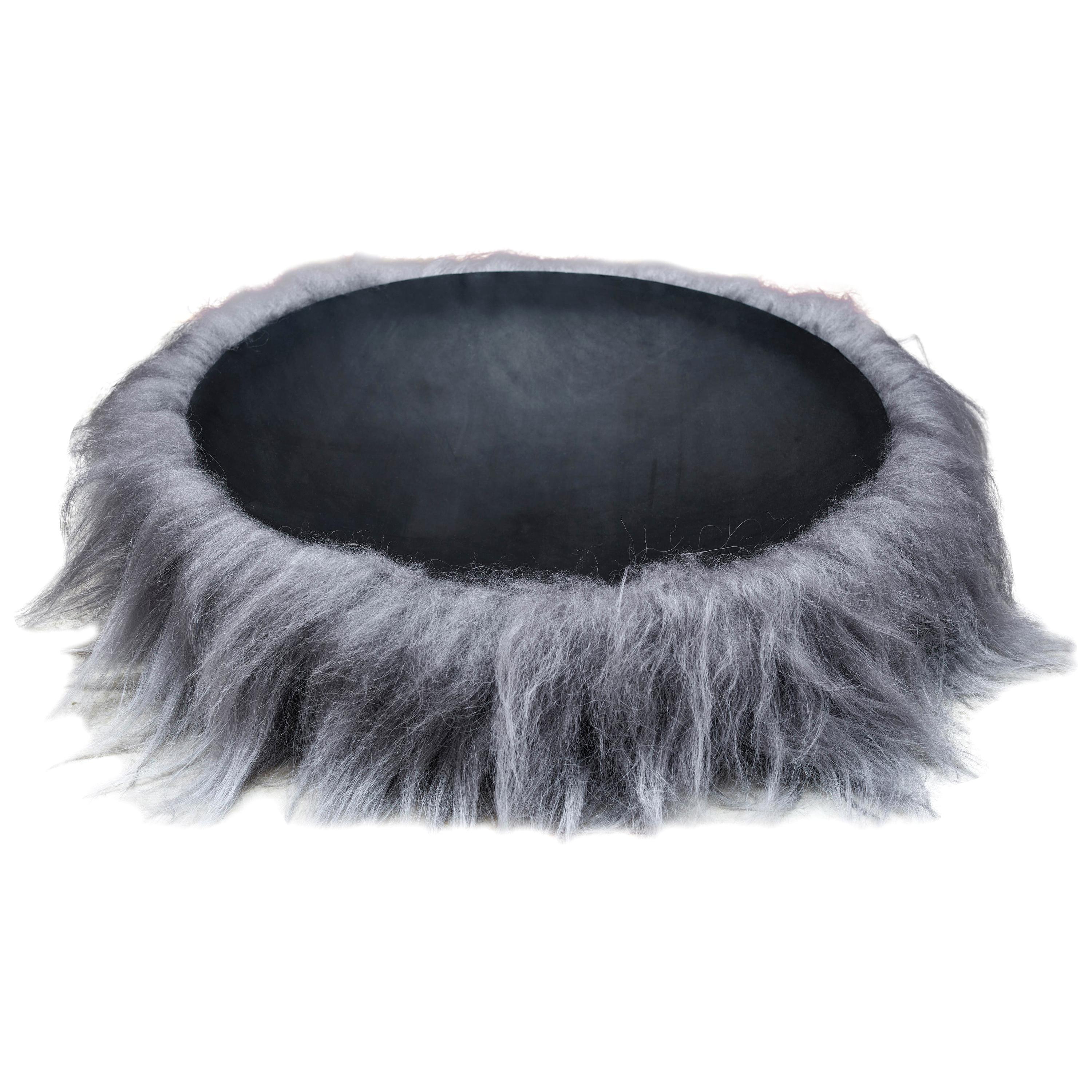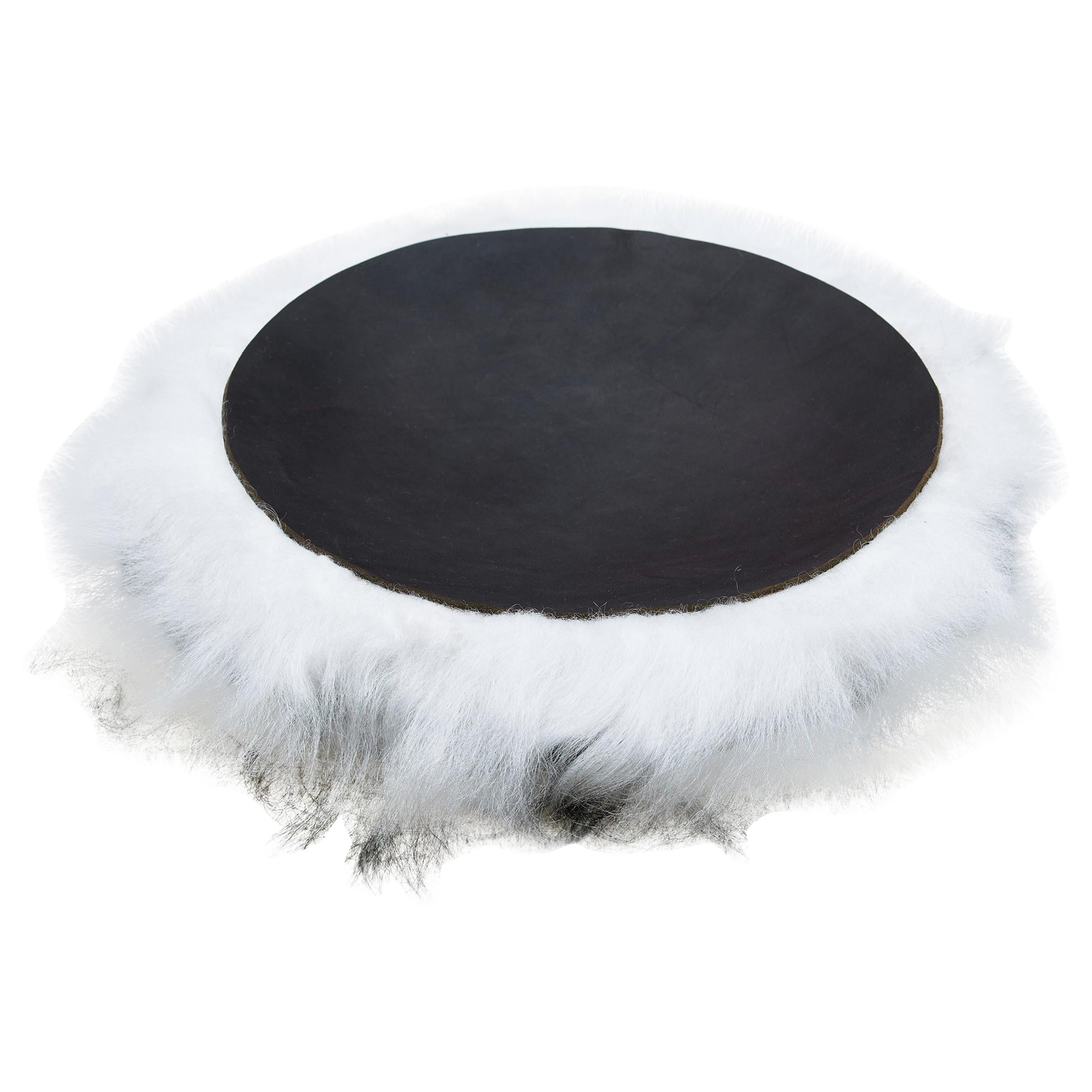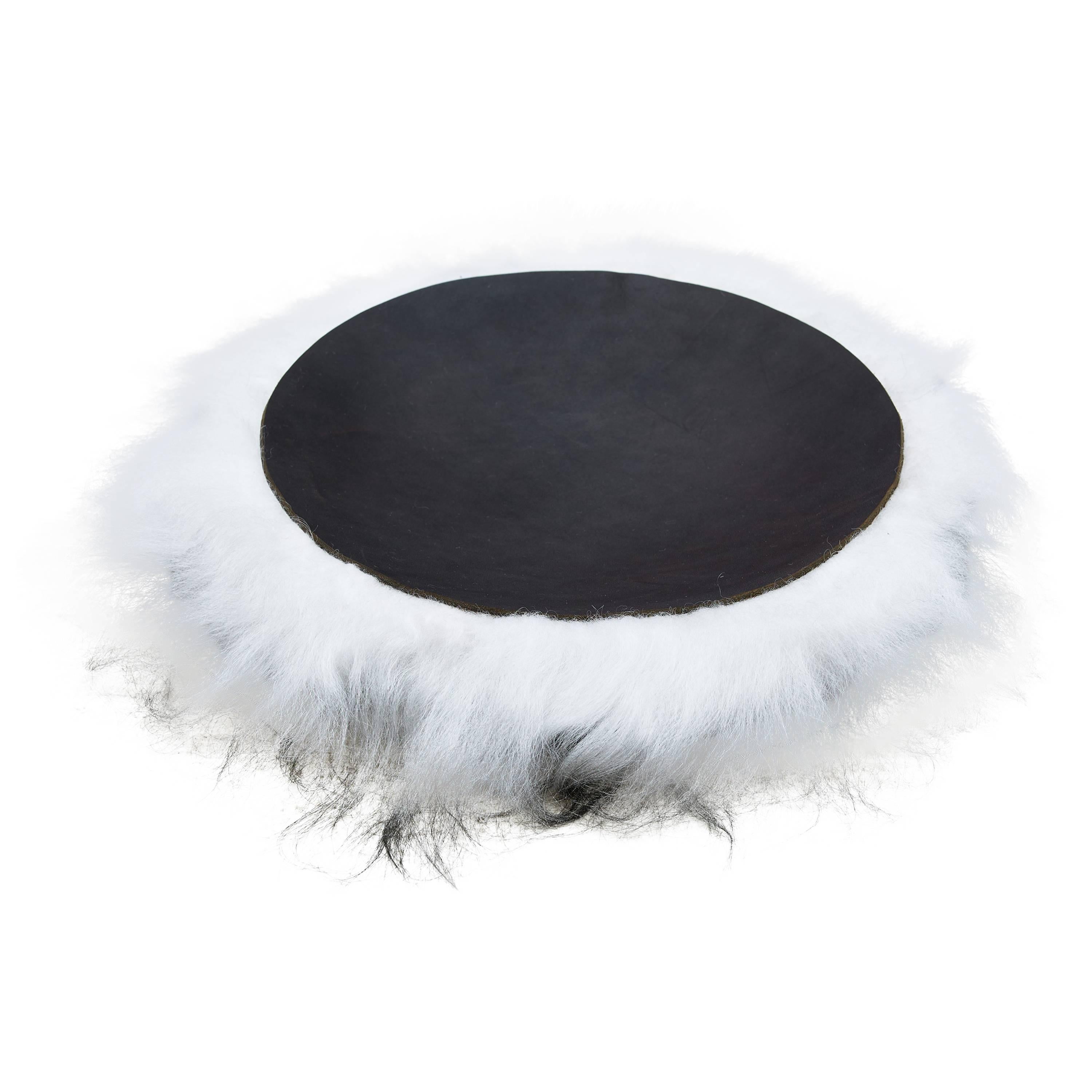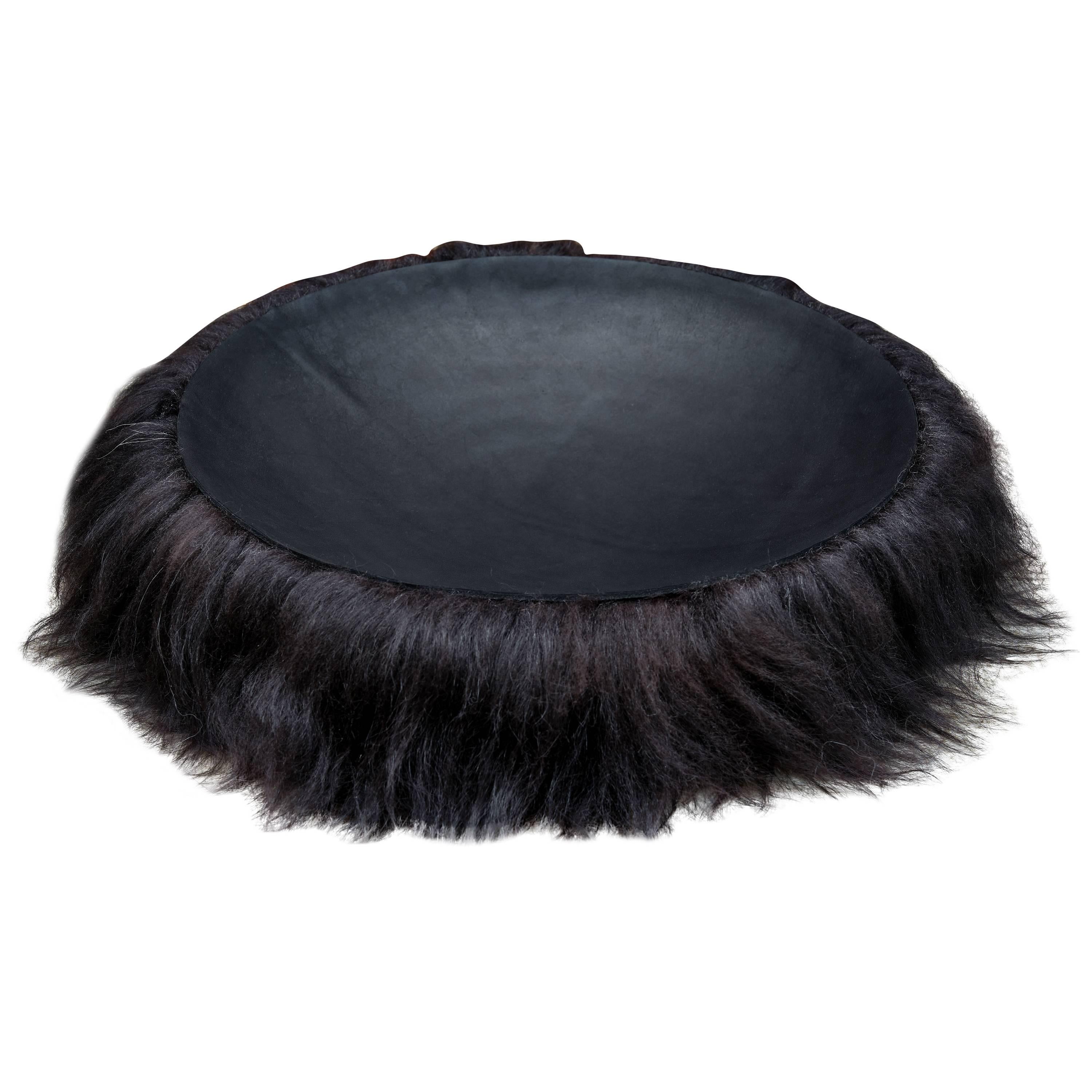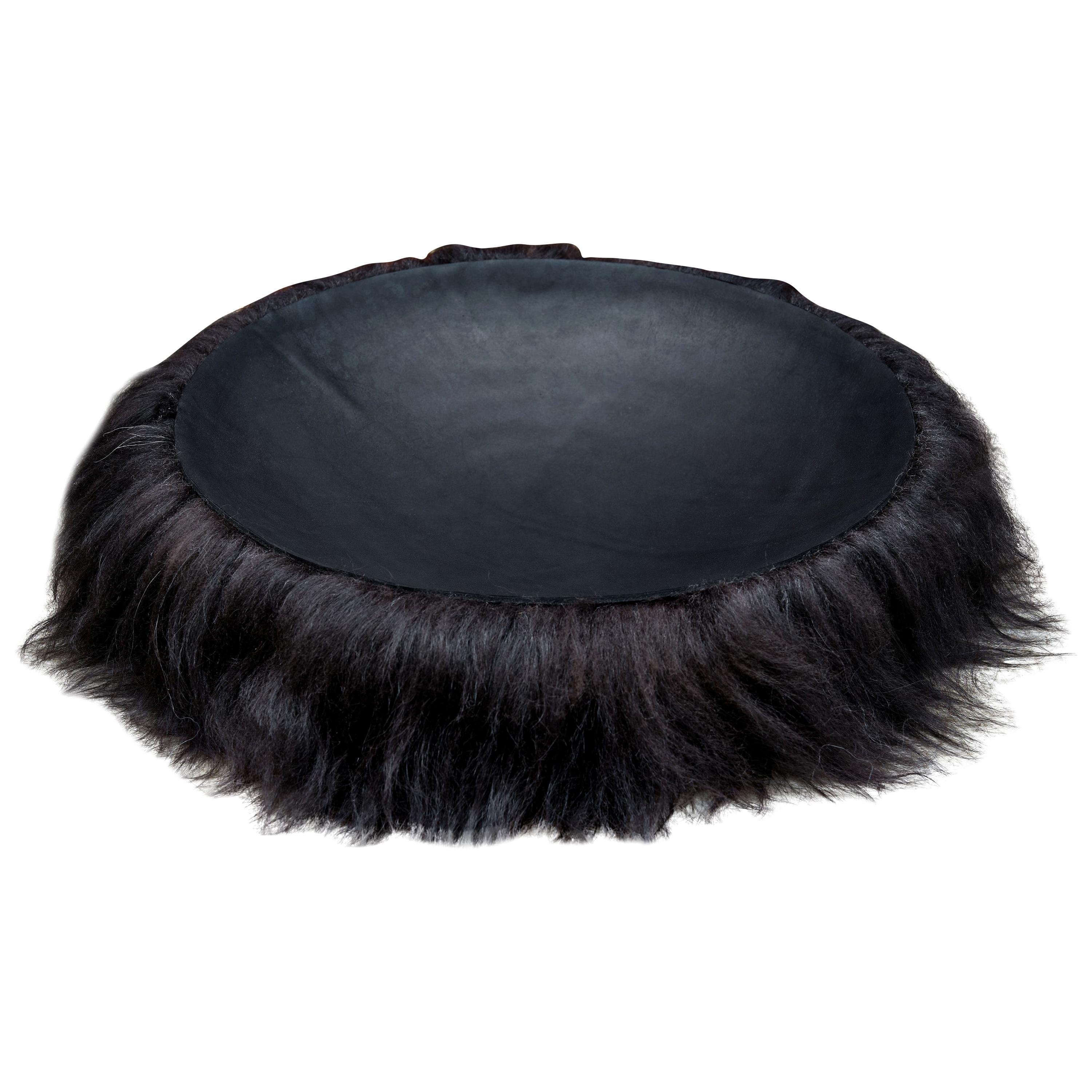Items Similar to Hairy Wild Man from Botany Bay Bowl Grey by Trent Jansen
Want more images or videos?
Request additional images or videos from the seller
1 of 2
Hairy Wild Man from Botany Bay Bowl Grey by Trent Jansen
About the Item
Broached monsters by Trent Jansen
The vast majority of mainstream Australian mythology commonly used as a
foundation for Australian identity is culturally exclusive. Both Indigenous myths, including post-colonial myths and precolonial dreaming stories, and non-indigenous Australian myths, including the bush legend, ANZAC tradition and convict legend, focus on the historical role that the race of authorship has played in building the nation. However, a contemporary understanding of Australian history acknowledges the contribution of both Indigenous and non-indigenous Australians in forging the nation, and the national identity which accompanies it. Instead of perpetuating the same exclusive national myths, perhaps Australians should adopt a national mythology that acknowledges this inclusive understanding of Australian history, a mythology that unites Australians of many backgrounds under a shared Australian identity.
In his book on Australia’s Folklore of Fear, Robert Holden explores pre-colonial ideas of Australia as a Great Southern Land – an imaginary landmass conjured up to counterbalance the continents in the northern hemisphere, as far removed as possible from Britain, the center of the Christian world (Holden, 2001). Holden speaks of Australia as an imaginary world, occupied by unimaginable creatures and monsters.
Holden is commenting in part on the mythical creatures that originated in both British and Aboriginal Australian folklore and were shared by the Aboriginal and non-Aboriginal inhabitants of Sydney during the early years of colonisation. Stories of the yahoo, a creature that resembled a slender man, with long white straight hair, extraordinarily long arms and great talons (Unknown 1842), captured the imaginations of the new British settlers, and soon a fear of the yahoo became a common ground between Aboriginal people and British settlers. is fear of a gruesome and vicious creature gained its potency from the folkloric tales that were used to substantiate its existence. These tales were suitably vague, their lack of detail
attributed to the fierce nature of these creatures and the assumption that no one had survived an encounter (Holden, Thomas et al. 2001).
The yahoo “became one of the very few Aboriginal legends to be embraced by the Europeans” (Holden, Thomas et al. 2001, p16), providing a catalyst for conversation between individuals from these two culturally disparate societies and forming some personal links between these communities. Could creature myths like the yahoo once again form the foundation of a united national identity, bring together our culturally disparate population under a single Australian mythology?
- Creator:Trent Jansen (Artist)
- Dimensions:Height: 3.94 in (10 cm)Diameter: 17.72 in (45 cm)
- Materials and Techniques:
- Place of Origin:
- Period:
- Date of Manufacture:2016
- Production Type:New & Custom(Current Production)
- Estimated Production Time:Available Now
- Condition:
- Seller Location:Beverly Hills, CA
- Reference Number:1stDibs: LU107947466773
About the Seller
5.0
Recognized Seller
These prestigious sellers are industry leaders and represent the highest echelon for item quality and design.
Established in 2020
1stDibs seller since 2014
405 sales on 1stDibs
Typical response time: 9 hours
- ShippingRetrieving quote...Ships From: Rockdale, Australia
- Return PolicyThis item cannot be returned.
More From This SellerView All
- Hairy Wild Man from Botany Bay Bowl White by Trent JansenBy Trent JansenLocated in Beverly Hills, CABroached Monsters by Trent Jansen The vast majority of mainstream Australian mythology commonly used as a foundation for Australian identity is culturally exclusive. Both Indigenou...Category
21st Century and Contemporary Australian Decorative Bowls
MaterialsAluminum
- Hairy Wild Man from Botany Bay Bowl Black by Trent JansenBy Trent JansenLocated in Beverly Hills, CABroached Monsters by Trent Jansen The vast majority of mainstream Australian mythology commonly used as a foundation for Australian identity is culturally exclusive. Both Indigenous myths, including post-colonial myths and precolonial dreaming stories, and non-indigenous Australian myths, including the bush legend, ANZAC tradition and convict legend, focus on the historical role that the race of authorship has played in building the nation. However, a contemporary understanding of Australian history acknowledges the contribution of both Indigenous and non-indigenous Australians in forging the nation, and the national identity which accompanies it. Instead of perpetuating the same exclusive national myths, perhaps Australians should adopt a national mythology that acknowledges this inclusive understanding of Australian history, a mythology that unites Australians of many backgrounds under a shared Australian identity. In his book on Australia’s Folklore of Fear, Robert Holden explores pre-colonial ideas of Australia as a Great Southern Land – an imaginary landmass conjured up to counterbalance the continents in the northern hemisphere, as far removed as possible from Britain, the center of the Christian world (Holden, 2001). Holden speaks of Australia as an imaginary world, occupied by unimaginable creatures and monsters. Holden is commenting in part on the mythical creatures that originated in both British and Aboriginal Australian folklore and were shared by the Aboriginal and non-Aboriginal inhabitants of Sydney during the early years of colonization. Stories of the yahoo, a creature that resembled a slender man, with long white straight hair, extraordinarily long arms and great talons (Unknown 1842), captured the imaginations of the new British settlers, and soon a fear of the yahoo became a common ground between Aboriginal people and British settlers. is fear of a gruesome and vicious creature gained its potency from the folkloric tales that were used to substantiate its existence. These tales were suitably vague, their lack of detail attributed to the fierce nature of these creatures and the assumption that no one had survived an encounter (Holden, Thomas et al. 2001). The yahoo “became one of the very few Aboriginal legends to be embraced by the Europeans” (Holden, Thomas et al. 2001, p16), providing a catalyst for conversation between individuals from these two culturally disparate societies and forming some personal links between these communities. Could creature myths like the yahoo once again form the foundation of a united national...Category
21st Century and Contemporary Australian Decorative Bowls
MaterialsAluminum
- Pankalangu BowlBy Trent JansenLocated in Beverly Hills, CABroached monsters by Trent Jansen The vast majority of mainstream Australian mythology commonly used as a foundation for Australian identity is culturally exclusive. Both Indigenous myths, including post-colonial myths and precolonial dreaming stories, and non-indigenous Australian myths, including the bush legend, ANZAC tradition and convict legend, focus on the historical role that the race of authorship has played in building the nation. However, a contemporary understanding of Australian history acknowledges the contribution of both Indigenous and non-indigenous Australians in forging the nation, and the national identity which accompanies it. Instead of perpetuating the same exclusive national myths, perhaps Australians should adopt a national mythology that acknowledges this inclusive understanding of Australian history, a mythology that unites Australians of many backgrounds under a shared Australian identity. In his book on Australia’s Folklore of Fear, Robert Holden explores pre-colonial ideas of Australia as a Great Southern Land – an imaginary landmass conjured up to counterbalance the continents in the northern hemisphere, as far removed as possible from Britain, the center of the Christian world (Holden, 2001). Holden speaks of Australia as an imaginary world, occupied by unimaginable creatures and monsters. Holden is commenting in part on the mythical creatures that originated in both British and Aboriginal Australian folklore and were shared by the Aboriginal and non-Aboriginal inhabitants of Sydney during the early years of colonisation. Stories of the yahoo, a creature that resembled a slender man, with long white straight hair, extraordinarily long arms and great talons (Unknown 1842), captured the imaginations of the new British settlers, and soon a fear of the yahoo became a common ground between Aboriginal people and British settlers. is fear of a gruesome and vicious creature gained its potency from the folkloric tales that were used to substantiate its existence. These tales were suitably vague, their lack of detail attributed to the fierce nature of these creatures and the assumption that no one had survived an encounter (Holden, Thomas et al. 2001). The yahoo “became one of the very few Aboriginal legends to be embraced by the Europeans” (Holden, Thomas et al. 2001, p16), providing a catalyst for conversation between individuals from these two culturally disparate societies and forming some personal links between these communities. Could creature myths like the yahoo once again form the foundation of a united national...Category
21st Century and Contemporary Australian Decorative Bowls
MaterialsAluminum
- Scandinavian Leather Saddle Vessel Tall by Trent Jansen & Johnny NargoodahBy Trent JansenLocated in Beverly Hills, CAJohnny Nargoodah and Trent Jansen have been collaborating in the design and crafting of collectable furniture since they met in Johnny’s home town of Fitzroy Crossing, as part of Fremantle Art Centre’s ‘In Cahoots’ project in 2016. This collection - Saddle (2020) gains its name from the first sketch that Johnny made for this collection, an elongated saddle that led to experiments in stretching supple Scandinavian upholstery leather between geometric timber and steel forms to generate new, complex transitioning forms. Sketch exchanges over an 18-month period eventually yielded an entire collection built on this beautiful capability of leather to stretch between forms and give shape to the space in-between objects. Trent Jansen & Johnny Nargoodah Partu (Skin) Collection Saddle Vessel Tall...Category
2010s Australian Decorative Baskets
MaterialsBrass
- Scandinavian Leather Saddle Vessel Long by Trent Jansen & Johnny NargoodahBy Trent JansenLocated in Beverly Hills, CAJohnny Nargoodah and Trent Jansen have been collaborating in the design and crafting of collectable furniture since they met in Johnny’s home town of ...Category
2010s Australian Decorative Baskets
MaterialsBrass
- 'Partu' New Zealand Leather Small Vessel by Trent Jansen & Johnny NargoodahBy Trent JansenLocated in Beverly Hills, CA‘Partu’ (2020) is the Walmajarri word for ‘skin’ and is Johnny Nargoodah and Trent Jansen's latest collaborative project experimenting with this combination of disparate sensibilitie...Category
2010s Australian Decorative Baskets
MaterialsAluminum
You May Also Like
- Hairy Wild Man from Botany Bay Bowl Grey by Trent JansenBy Trent JansenLocated in Beverly Hills, CABroached monsters by Trent Jansen The vast majority of mainstream Australian mythology commonly used as a foundation for Australian identity is culturally exclusive. Both Indigenous myths, including post-colonial myths and precolonial dreaming stories, and non-indigenous Australian myths, including the bush legend, ANZAC tradition and convict legend, focus on the historical role that the race of authorship has played in building the nation. However, a contemporary understanding of Australian history...Category
21st Century and Contemporary Australian Decorative Bowls
MaterialsAluminum
- Hairy Wild Man from Botany Bay Bowl White by Trent JansenBy Trent JansenLocated in Beverly Hills, CABroached Monsters by Trent Jansen The vast majority of mainstream Australian mythology commonly used as a foundation for Australian identity is culturally exclusive. Both Indigenous myths, including post-colonial myths and precolonial dreaming stories, and non-indigenous Australian myths, including the bush legend, ANZAC tradition and convict legend, focus on the historical role that the race of authorship has played in building the nation. However, a contemporary understanding of Australian history...Category
21st Century and Contemporary Australian Decorative Bowls
MaterialsAluminum
- Hairy Wild Man from Botany Bay Bowl Black by Trent JansenBy Trent JansenLocated in Beverly Hills, CABroached Monsters by Trent Jansen The vast majority of mainstream Australian mythology commonly used as a foundation for Australian identity is culturally exclusive. Both Indigenou...Category
21st Century and Contemporary Australian Decorative Bowls
MaterialsAluminum
- Pankalangu BowlBy Trent JansenLocated in Beverly Hills, CABroached monsters by Trent Jansen The vast majority of mainstream Australian mythology commonly used as a foundation for Australian identity is culturally exclusive. Both Indigenou...Category
21st Century and Contemporary Australian Decorative Bowls
MaterialsAluminum
- Kariba Fruit Bowl, by Matteo Thun from Memphis MilanoBy Matteo Thun, Memphis Group, Memphis MilanoLocated in La Morra, CuneoThe Kariba fruit bowl was originally designed by Matteo Thun in 1982 for Memphis. Born 1952 in Bolzano, Italy. Matteo Thun studies under Oskar Kokoschka at the Salzburg Academy of A...Category
21st Century and Contemporary Italian Modern Serving Bowls
MaterialsPorcelain
- Broccoli Fruit Bowl, by Marco Zanini from Memphis MilanoBy Memphis Group, Marco Zanini, Memphis MilanoLocated in La Morra, CuneoCeramic three-level fruit bowl originally designed by Marco Zanini in 1985 for Memphis Milano. The three geometrical shapes in three colors complete the idea of a trilogy. Marco Zan...Category
21st Century and Contemporary Italian Modern Serving Bowls
MaterialsCeramic
